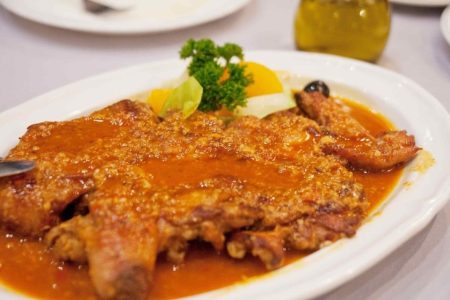If you’ve read the last two parts of this series, you’ll know that in order to approach a wine, we first need to use our senses of sight and smell. You might be tempted to regard the latter as a mere prelude to the final step – that of tasting. But anybody who has had a bout of flu, or a blocked nose, will know that the acts of smelling and tasting are inextricably connected.
Step 1: Tasting wine the professional way
Tasting is not only performed by the papillae (small, rough bumps containing taste buds) on the tongue but also by the back of the throat and even parts of the nasal cavity. For this reason, sommeliers recommend that you taste the wine in a way that will reveal all aspects of the flavour profile.
Take a big mouthful – small sips don’t work – and swirl it to ensure that the wine reaches all of your taste buds, front and back, left and right. At the same time, inhale deeply through the nostrils, drawing air to the back of your nose.
Once the wine is in your mouth, the first thing to establish is that the flavours you are experiencing on the palate match the aromas your nose detected earlier. Good wines will exhibit that consistency. Next, assess the flavour intensity. The better the bottling, the more intense the flavours tend to be.
Step 2: Judge sweetness and tannins
Professionals will grade a wine using several specific terms. We can speak of a wine’s sweetness, tannins, body, structure, texture and aftertaste.
Sweetness is probably the most straightforward to assess. Each grape variety has a different potential sugar level, affected by climate. To ensure you detect it correctly, use the tip of your tongue. Tannins are polyphenols found in grape skins, stems and seeds, as well as in oak barrels. They cause a drying, astringent sensation on the mouth and teeth.
White wines have far fewer tannins, as they tend to be made without contact with grape skins. Thin-skinned grape varieties like pinot noir and gamay have low tannins, while thick-skinned grapes like cabernet sauvignon and shiraz have a higher tannin potential.
Tannin levels are also affected by the time a wine has spent in oak and by winemaking processes such as remontage, or pumping over, when the cap of stems, seeds, skin and pulp that form over the fermenting juice are mixed with it again, much like a teabag is repeatedly dipped in water to strengthen the brew.
Step 3: Assess acidity and aftertaste
Another point to note is acidity, which is easy to tell from the amount of saliva a wine produces in your mouth. Greater acidity means more saliva. Varieties like sauvignon blanc and riesling tend to be high in acidity, chardonnay and pinot grigio less so. Wines from cooler regions are usually higher in acidity than wines from warmer ones.
Finally, be aware of a wine’s aftertaste – the length of time that the flavours stay in your mouth. With some wines, it can be as brief as 10 seconds, while others can last up to 30 seconds or more. The aftertaste of a great Bordeaux endures for up to a minute sometimes.
Now that you have used your senses of sight, smell and taste, you are ready to deeply appreciate the wine. Do you find it balanced? Does it have a good and firm structure? Is the texture smooth, silky or rough?
Don’t forget that wine tasting is best done as a collaborative activity. When you enjoy wine with others, you can share your thoughts on what you are tasting, improve your skill and broaden your knowledge.
Saúdinha! I hope to have a glass with my readers one day.
Want to know more? Check out the earlier instalments in Maggie Kim’s beginner’s guide to wine assessment, Part 1: How to inspect a wine by sight and Part 2: How to evaluate a wine by its bouquet.






